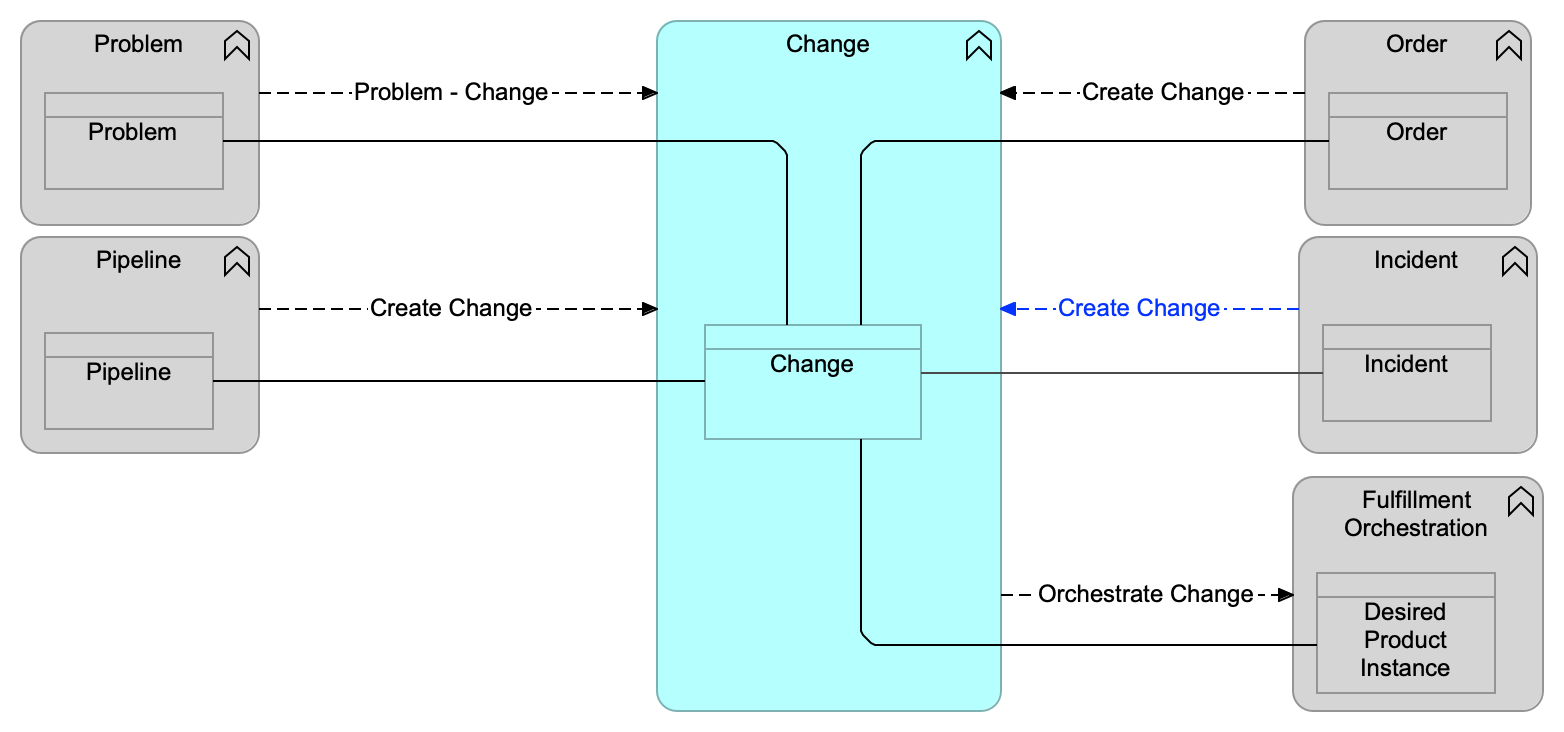Change Functional Component

Purpose
The Change functional component is responsible for controlling the lifecycle of Changes in the technology environment to make sure that Changes are captured, analyzed, assessed, and implemented in a standardized and auditable way so that the business risk is minimized through the following means:
-
Facilitate communication with stakeholders
-
Assess the risk of proposed Changes (Change Orders) and their implementation; support the impact and risk assessments to minimize the risk of production disruptions involved when rolling out Changes
-
Enable notification of all affected Change stakeholders and facilitate their collaboration on Change execution
-
The Change authority reviews the Change Orders and authorizes the valid Changes
-
The Change type, standard or normal, is determined based on the Change risk profile
-
Support the automation of Changes so that human participation is reserved for the highest value-added and most complex Change activity
For example, the Event functional component or Incident functional component may use a manual or automated Runbook to resolve well-understood issues without an active Change. These classes of pre-approved Changes may vary by company and by the criticality of service. For these pre-approved changes, it is assumed that the Change is recorded and that the Change Management process has access to that information. A typical example would be a Runbook automation script that fixes the issue. The relationship to the Actual Product Instance is maintained to allow Configuration Management to have access to Change information.
-
Changes initiated by the Pipeline functional component (for CI/CD) making it completely automated, with a reduced change size (iterative) and to an acceptable risk level; therefore, only log the Change details in the Change record
-
Change Management may automate the creation of the Change record, the risk assessment, and its approval process using data that is collected via integration to existing CI/CD pipelines to expedite the overall product deployment process while maintaining compliance
-
Change functional component integration with the Fulfillment Orchestration functional component to orchestrate the deployments
If a Change is low risk, it will be automatically approved, and deployed instantly. If a Change is high risk, the deployment will be delayed until the Change record is manually approved or stopped completely if a Change record is rejected.
-
Certain types of changes (e.g., end-user request items) are initiated from the Order functional component and may directly trigger the Fulfillment Orchestration functional component for the fulfillment of the order
-
Enable Change Management against a Change calendar to avoid Change collisions
-
Check and steer conflict resolutions between parallel planned deployments
The Change functional component supports the value streams:
Functional Criteria
The Change functional component:
-
Shall act as an authoritative system of record for all change requests
-
Shall manage the state and lifecycle of the Change
-
Shall facilitate communication with stakeholders
-
Shall assess the risk of proposed Changes and their implementation
-
Shall support the impact and risk assessments to minimize the risk of production disruptions involved when rolling out Changes
-
Shall identify affected Change stakeholders and send them notifications throughout the Change lifecycle
-
May support the automation of Change execution as much as possible
-
Shall maintain the relationship of the Change to the actual service to allow Configuration Management to have access to Change information
-
Shall facilitate with a Change calendar to avoid Change collisions
-
Shall manage conflicting resolutions for collateral deployments
-
Can receive a Change directly from the Pipeline functional component to fulfill the order initiated by the Pipeline
These Changes, initiated by the Pipeline functional component (for CI/CD), are often completely automated, with a decreased Change size (iterative) and to an acceptable risk level
-
Can provide Change data to the Event and/or Monitoring functional components to facilitate a root-cause analysis process in the context of the impact Changes may have
-
Shall associate a Fulfillment Order request with a Change record
-
Shall associate Change(s) to Desired Product Instance(s)
-
Shall classify the Change type (standard, emergency, or normal) based on the Change risk profile
-
Shall associate Changes with Incidents in response to Incidents that are resolved by implementing an emergency change
-
Shall associate Changes to the Problem in order to implement a fix to the issue that is documented by the Problem if a Problem functional component exists